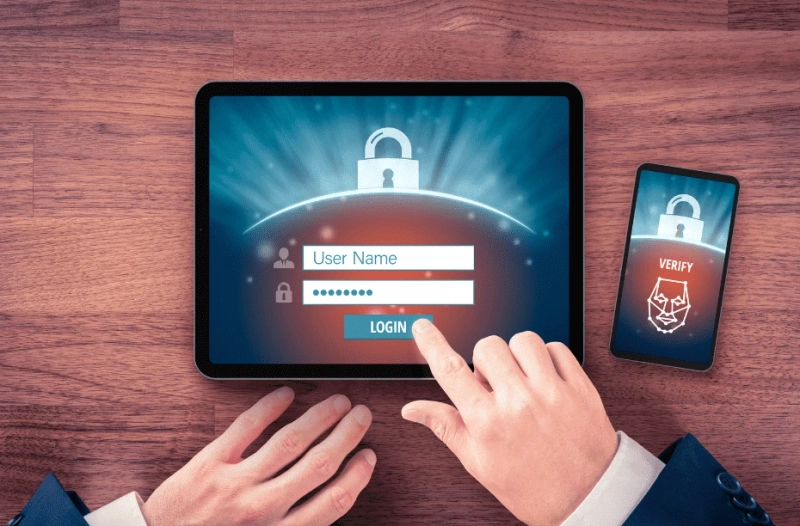Enhancing Security with Multi-Factor Authentication
Safeguarding your business from threats requires more than just strong passwords. Multi-Factor Authentication (MFA) has emerged as a critical component of robust security strategies, providing an additional layer of protection that can significantly reduce the risk of unauthorized access. This article delves into the benefits and implementation of MFA and explains why it is essential for any business aiming to fortify its cybersecurity defenses.
What is Multi-Factor Authentication?
Multi-Factor Authentication is a security process that requires users to provide two or more verification factors to gain access to a resource, such as an application, online account, or VPN. Rather than just asking for a username and password, MFA requires additional credentials, which fall into three categories:
Something You Know: A password or PIN.Something You Have: A smartphone, security token, or smart card.Something You Are: Biometrics like fingerprints or facial recognition.The Benefits of Multi-Factor Authentication
Enhanced Security: By requiring multiple forms of verification, MFA makes it more difficult for attackers to gain access to sensitive information. Even if a password is compromised, additional authentication factors can block unauthorized access.Compliance with Regulations: Many regulatory frameworks, such as GDPR, HIPAA, and PCI-DSS, mandate or recommend the use of MFA to protect sensitive data. Implementing MFA can help businesses meet these compliance requirements.Reduced Risk of Data Breaches: According to a study by Verizon, 81% of data breaches involve weak or stolen passwords. MFA significantly reduces the likelihood of breaches caused by compromised credentials.Implementing Multi-Factor Authentication
Implementing MFA in your organization involves several steps:
Assess Your Needs: Conduct a cybersecurity risk assessment to identify which systems and data require the highest levels of protection.Choose the Right MFA Solution: Select an MFA solution that integrates seamlessly with your existing systems. Consider factors like ease of use, compatibility, and cost.Educate Your Employees: Ensure that your staff understands the importance of MFA and how to use it correctly. Provide training sessions and resources to help them adapt to the new security measures.Monitor and Maintain: Regularly review and update your MFA implementation to address emerging threats and ensure ongoing effectiveness.Risks of Not Implementing Multi-Factor Authentication
While some businesses may hesitate to implement MFA due to perceived complexity or cost, the risks of not doing so are significant:
Increased Vulnerability to Cyber Attacks: Without MFA, a single compromised password can give attackers full access to your systems. This vulnerability is especially critical as phishing and credential-stealing malware become more sophisticated.Non-Compliance Penalties: Failing to implement MFA can result in non-compliance with regulatory requirements, leading to hefty fines and legal repercussions. Regulatory bodies increasingly recognize MFA as a standard security measure.Data Breaches and Financial Losses: Data breaches can be financially devastating. According to IBM, the average cost of a data breach in 2021 was $4.24 million. MFA significantly reduces the risk of breaches, helping to protect your bottom line.Damage to Reputation: A data breach can erode customer trust and damage your business's reputation. Implementing MFA demonstrates your commitment to security, helping to build and maintain trust with clients and partners.Operational Disruption: Cyber attacks can disrupt business operations, leading to downtime and lost productivity. MFA helps prevent unauthorized access, ensuring that your business can continue to operate smoothly.Overcoming Common Challenges
While MFA offers significant benefits, businesses may encounter challenges during implementation. Here are some common obstacles and how to overcome them:
User Resistance: Employees may resist using MFA due to perceived inconvenience. Address this by communicating the importance of MFA and providing adequate training and support.Compatibility Issues: Ensure that your chosen MFA solution is compatible with your existing systems and applications. Work with a trusted cybersecurity partner, like Allied Technology, to find the best solution for your needs.Cost Concerns: While there may be initial costs associated with implementing MFA, the long-term benefits of preventing data breaches and ensuring compliance far outweigh these expenses.Future Trends in Multi-Factor Authentication
As cybersecurity threats continue to evolve, so too will MFA technologies. Future trends may include:
Biometric Advancements: Improved biometric authentication methods, such as iris scanning and voice recognition, will enhance security and user experience.Behavioral Biometrics: This involves analyzing user behavior, such as typing patterns and mouse movements, to identify potential security threats.Adaptive Authentication: Using machine learning algorithms, adaptive authentication dynamically adjusts the level of authentication required based on the user's behavior and risk profile.Strengthening Your Cybersecurity with MFA
Incorporating Multi-Factor Authentication into your cybersecurity strategy is a critical step in protecting your business from cyber threats. By requiring multiple forms of verification, MFA adds an essential layer of security that can prevent unauthorized access and data breaches. As cyber threats continue to evolve, implementing robust MFA solutions will ensure your business remains secure and compliant.
To learn more about how Allied Technology can help you implement effective MFA solutions and strengthen your cybersecurity defenses, go to Allied Technology.


